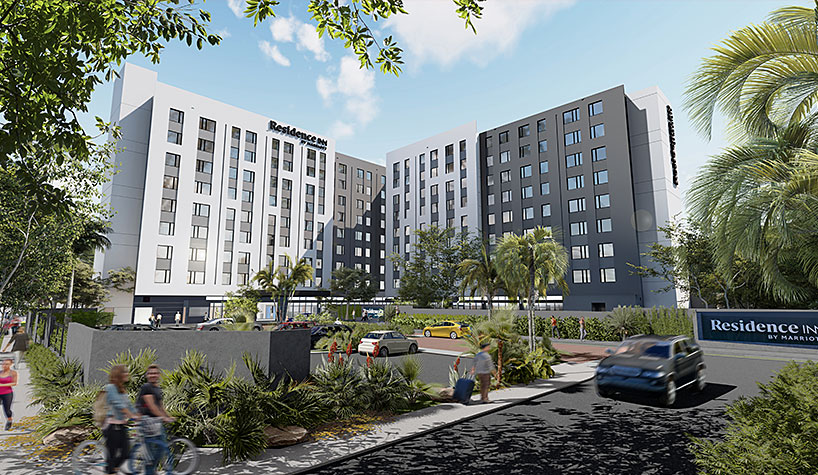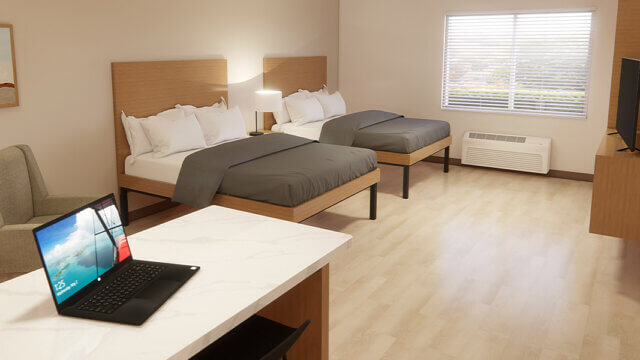CAROLINA, PR—Residence Inn by Marriott Isla Verde, the first property for the brand in Puerto Rico, is under construction here in the Isla Verde neighborhood, just outside of San Juan. It will be the first branded property in 25 years in Isla Verde. Locally based architecture and interior design firm Alvarez-Díaz & Villalón (AD&V) is designing the project.
According to Ricardo Alvarez-Díaz, co-founder/chairman of AD&V, the nine-story, extended-stay hotel will have 231 guestrooms equipped with kitchens, bathrooms, and living and work areas. The ground-floor public areas will include an open vestibule with a porte cochere, reception area with front desk, a living room area, interior/exterior bar, dining areas, meeting spaces, bathrooms, gym and a restaurant. The exterior amenities will include a patio area for seating and dining, a lap pool and kid pools with interactive water elements and play structure.
“The back of the house will include administrative offices, utility rooms, an engineer’s office, an employee breakroom, laundry, kitchen and other support services,” he added. “The facilities will also have full backup electrical generators.”
A number of sustainable measures will be taken during construction, noted Alvarez-Díaz, who said they include “the protection of many of the existing trees; construction waste management consisting of recycling at least 50% of nonhazardous construction materials; indoor air quality management plans; and construction activity pollution prevention.”
According to the designer, the building will be seeking the Green Permit Certification from Puerto Rico, following LEED parameters. It will not pursue LEED Certification, but it will be achievable as the hotel will be following sustainable measures by complying with the following:
- LEED Location and Transportation credits, by constructing the project in a previously developed site, in a high-density area and with many basic services at close distance and close to public transportation; by providing bicycle parking; limiting the number of parking spaces; and providing electric vehicle (EV) charging stations and designated preferred parking to green vehicles.
- LEED Water Efficiency credits, by not using landscape irrigation systems; reducing indoor water use by installing water conserving equipment at the guestrooms and public areas; and water metering and submetering.
- LEED Material and Resources credits, by storage and collection of recyclables; construction waste management; and by having many products with Environmental Product Declarations, which address their environmental impacts.
- LEED Energy and Atmosphere credits, by meeting the fundamental and enhanced commissioning requirements; energy metering; refrigerant management by using no chlorofluorocarbon (CFC) refrigerants; and optimizing energy performance.
Alvarez-Díaz also noted that the project will also comply with the LEED Enhanced Indoor Environmental Quality credits by doing the following:
- Following indoor air quality performance requirements, including prohibiting smoking
- Using low-emitting materials
- Having a construction indoor air quality plan
- Complying with the thermal comfort requirements of ASHRAE 55
- Using high-efficiency lighting and controls with daylighting strategies to maximize natural light but with glare control devices, and providing direct sight to the outdoors for building occupants
- Acoustical performance by controlling HVAC background noise, sound transmission between spaces and other requirements



